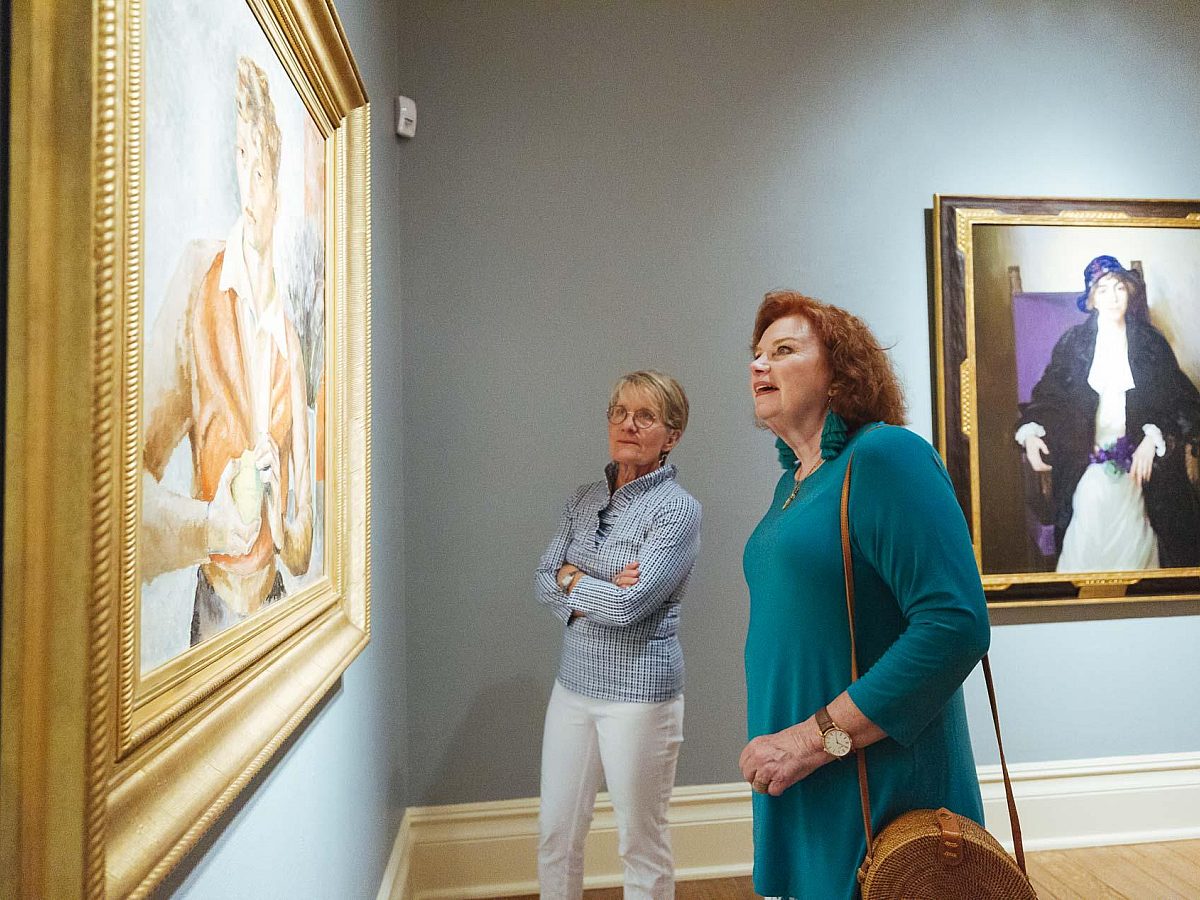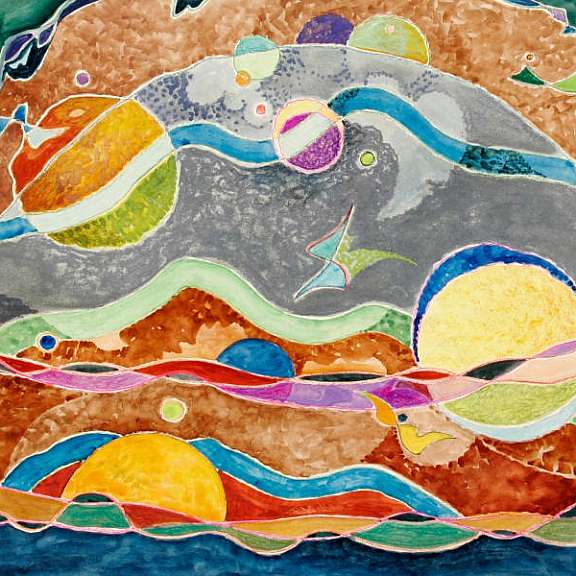
Did you know you can learn to read visual works of art like you would a book? It’s called visual literacy, and it’s the answer to one of the most commonly asked questions in an art museum: “What does this mean?”
You already use visual literacy skills in your day-to-day life – reading body language, for example, or obeying road signs. In these interactions, you’re viewing images and responding to them accordingly. So how do we apply these skills to understanding art?
Different artworks require different techniques. For example, for portraits or seascapes, a viewer can quickly identify the subject. But for more abstract paintings, this can be difficult and not very helpful. The following are a few of these techniques and examples from the Dixon Collection of what kinds of art they might work best with. Sometimes you’ll only be able to apply one or two to a work, sometimes they all might fit.

Find the Subject
For works that are more realistic or clearly represent a place, person, thing, etc. a great first step is simply determining what the subject is. Once it’s found, look at the details surrounding the subject. If it’s a person or group of people, what are they doing? Are they interacting with others or alone? If it’s a place, what activities are happening there?
For example, in The Picnic by Georges-Pierre Seurat, the subject is three children sitting in the grass. In this case, the title itself is also helpful – it tells us exactly what the children are doing there and adds context to the scene. This painting is about children at a picnic. Then we can add our own interpretations if we want, for example, to me, this painting depicts the concept of growing up – the lack of adults in view gives the children more agency, though it’s probably unlikely they would actually be in the park alone, so perhaps they are playing pretend, mimicking what they’ve seen other adults do outside. But at the end of the day, they’re still children.

Building Blocks
Every work of art is made up of the basic elements: line, shape, color, space, and texture. Especially in more abstract or geometric pieces, the ways in which the artist uses these elements can tell us certain things about the work. Did they use clear, sharp lines or messy splatters? Are the colors mostly warm (red, yellow, orange) or cool (blue, purple, green)? Sometimes these can function as symbols we can interpret for meaning. Green is often used to represent liveliness or growth (though not always), rigid lines often call to mind stability while jagged lines are more chaotic and full of energy, etc.
Take a look at Abstract with Circles by Will Henry Stevens. There are lots of wavy lines, circles, ellipses, and unique polygon shapes. There are also a lot of colors, especially blue and oranges. A lot of these elements overlap, and when they do, they often change color at the intersection, such as the deep blue line that becomes lighter when it crosses the orange circle in the top left. It’s a chaotic piece of art! But the colors and shapes complement each other rather than feel overwhelming. This, combined with the use of curved, organic shapes and lines makes me think this work could be about the Earth or even the Universe. The circles remind me of planets, but the blue line outlining the orangish-brown shape along the bottom makes me think of a beach. Perhaps Stevens is trying to show the diverse complexity of the natural world while reminding us that it all works together in harmony.

Whodunnit?
In cases where we know a lot about the artist themselves, that knowledge can sometimes help us understand their work. Where they’re from, what they’re interested in, or where they were when they made the work are all helpful questions to ask. While our own interpretations of art are always valid, sometimes the artist also had a certain mission in mind that can be uncovered from the rest of their life/work.
In the gallery, this work, Saint-Briac, The Mariners’ Cross, by Paul Signac, is displayed with a wall panel that provides some background information. It tells us that this site is a popular seaside resort and that many other works by Signac are also of tourist destinations. However, Signac has decided to focus not on the busy beaches or open cafes, but this white cross by the sea. The panel tells us it is a monument to local fisherman. What does it say that Signac chose to focus on this part of the resort? To me, it suggests this work is about the people behind our holidays. The people who live in this area, and other touristy areas year-round and make their lives there. Signac seems to want us to remember them and not just the fun activities or relaxing vacations.

Look Within
With any piece of art, it’s helpful to consider how it makes you feel. Art is often designed to provoke a reaction, such as overwhelming the viewer or making the viewer feel nostalgic. Our reactions might not always be what the artist had in mind, but they can tell us how the art is affecting us and therefore what it might be about.
Pierre-Auguste Renoir painted this colorful work, titled The Wave. It’s rather large, which makes for great immersion. Spend some time just looking at the work, imagine stepping inside of it. Maybe the ocean is your favorite place, so this painting makes you really happy! Or maybe the size and power of this particular wave are more frightening and you feel overwhelmed. For me, personally, my eye is drawn to the rainbow of colors and I feel an urge to be creative! There are no wrong answers when utilizing this technique.
Next step? Come visit us at the Dixon, Tuesday through Saturday 10-5 or Sunday 1-5, and put your skills into practice!
- Brittany Ashley, Communications Intern ‘22